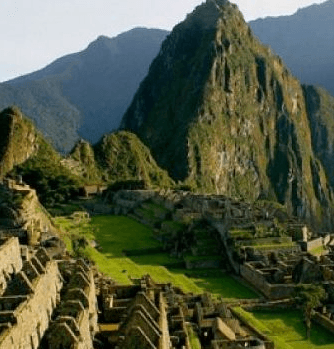
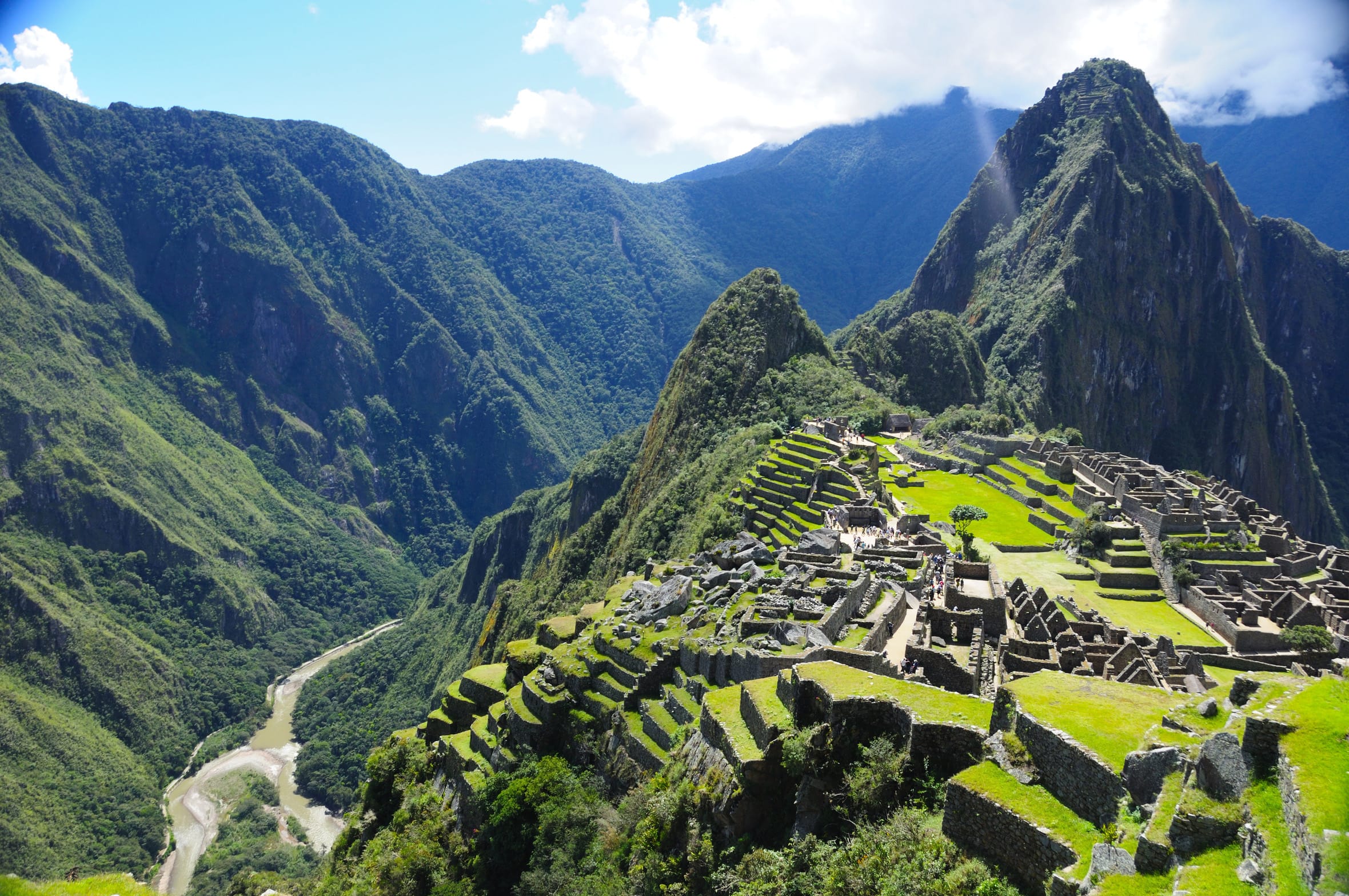


Peru – Machu Picchu and more
May to November
Moderate - 2,5 / 5
Peru – Machu Picchu and more
French and English-speaking groups available
May to November
“Self-guided” tours available
To visit Peru is to discover a country with spectacular landscapes and an ancient culture. Machu Picchu, the Inca city perched in the Andes, is one of the world’s most famous archaeological sites. But there’s more to Peru than Machu Picchu: the Nazca lines, Lake Titicaca, the Amazon jungle and the historic city of Cusco also offer unique experiences.
The country is distinguished by the diversity of its landscapes, from Pacific beaches to the Amazon and Andean peaks. Trekking enthusiasts will be delighted with tours such as the Inca Trail and the Salkantay.
Peru’s world-renowned gastronomy, with dishes such as ceviche, is sure to please.
In short, Peru combines nature, history and culture, making every trip a rich and unforgettable adventure.
On November 24, 2024, Peru was recognized as the world’s best cultural and culinary destination. See details here!

Discovering Machu Picchu
It was Hiram Bingham who discovered Machu Picchu and recognized the existence of this Inca route during his explorations in 1911 and 1915. In 1941, the Viking Foundation expedition led by Paul Fejos discovered further sections. It was on this occasion that the very important Wiñay Wayna site was discovered. It wasn’t until 1968 and the expedition led by Dr. Victor Angles that the site was uncovered in its entirety.
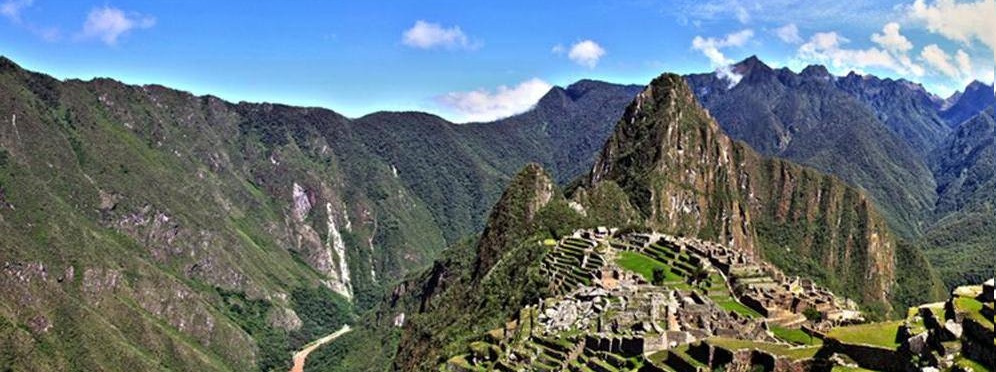
In 1981, to protect this archaeological treasure trove and the rich flora that surrounds it, the Peruvian government decided to classify the entire area of the Urubamba valley and the Vilcabamba mountain range as a national reserve, under the name of “Machu Picchu Archaeological Park”.
The exceptional beauty of the area, where nature and man’s ingenious creation blend in perfect harmony, has made this trail a veritable pilgrimage, transporting every traveller into another world, that of the splendid Inca universe. At the end of the trail, the sacred city of Machu Picchu, forgotten for centuries, is revealed.
Considered a masterpiece of Inca architecture, it was designated one of the New Seven Wonders of the World by the New Open World Foundation on July 7, 2007. Since then, thousands of hikers and visitors have marveled at this mountain-top architectural marvel.
And what about Cusco?
The Incas didn’t name Cuzco – “the navel” in Quechua – without reason. Every good itinerary in Peru passes through this city of exceptional historical heritage. The gateway to the Sacred Valley leading to Machu Picchu, the imperial city can be explored through its narrow streets, baroque churches and lively squares.
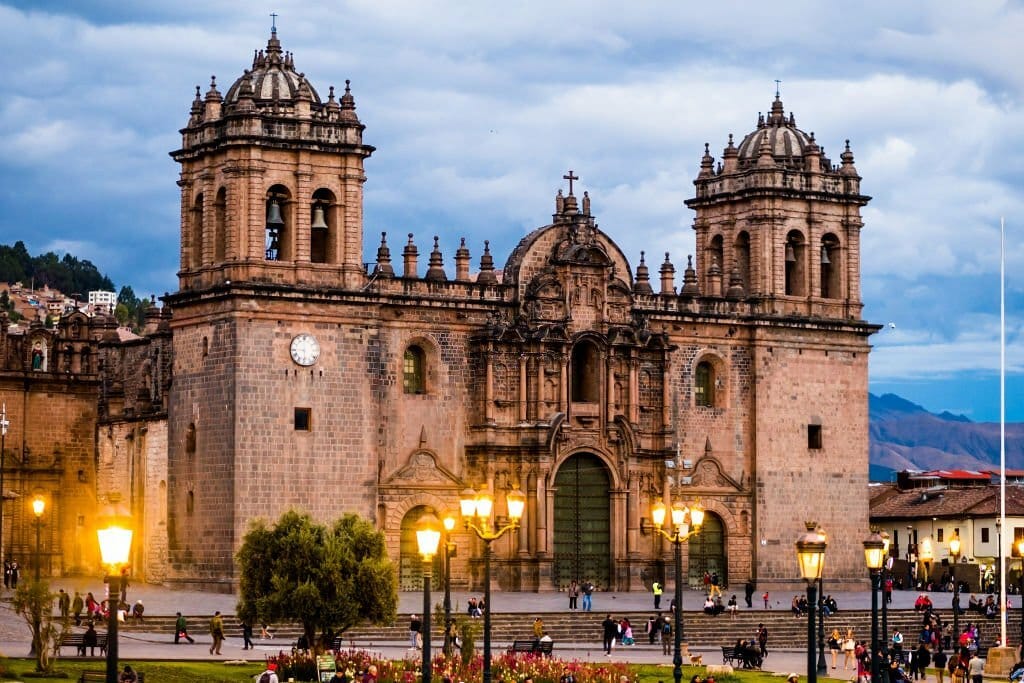
Weather on Machu Picchu:
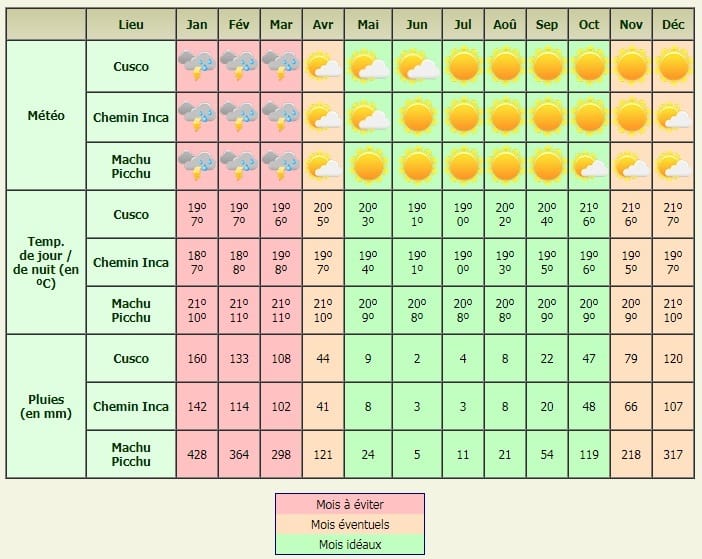
*** Optionnal – one night at SkyLodge – check it out
Have you ever wanted to sleep in a condor’s nest? Here is the next best thing! A transparent luxury capsule that hangs from the top of a mountain in the Sacred Valley Peru.
Located in the Sacred Valley of Cuzco, Peru, the exclusive Skylodge Adventure Suites offers you the chance to sleep within a completely transparent hanging bedroom, that allows you to appreciate the impressive view of this magic and mystic valley.
Short video re: the Incas route
4 m 30 s video on Peru
Suggested itinerary
Machu Picchu is one of many sites worth visiting in Peru. Of course it’s a must-see, but there’s also the Sacred Valley, the city of Cusco, white Arequipa, Lake Titicaca and the Amazon jungle. We can either include you in our already departing groups, or build you a tailor-made itinerary that will allow you to make the most of your visit to this wonderful Andean country.
Machu Picchu
There are many ways to get to Machu Picchu. We offer two (2) 4-day trekking tours, the mythical Inca Trail to Machu Picchu and the Salkantay trek. It is also possible to visit the site without taking these routes. Transportation (bus/train) can be arranged to take you to the town of Agua Calientes, the starting point for daily excursions to the site.
Private tour of the imperial city of Cusco, a UNESCO World Heritage Site and considered one of the most beautiful cities in South America.

Perched at an altitude of 3,400 m, it was built between the 11th and 12th centuries by the Inca people. Despite the arrival of the Spaniards in the 16th century, who transformed its architecture, the city is still strongly imbued with the Inca presence, with its colossal stone walls, districts divided into “canchas” and, above all, the presence of temple foundations on which the Spaniards built churches, monasteries and convents. With a population of over 300,000, this Andean capital remains a mysterious city whose every nook and cranny is a pleasure to explore.
Visit the Qoricancha (Temple of the Sun), built in 1440 by the Incas, followed by a 3-hour walk to discover the city’s historic center, including the Plaza de Armas and the colorful San Pedro market. Lunch in a local restaurant.
Note: The Boleto Turistico General de Cusco (BTG), worth 130 soles, is included in the price of this quote. It gives access to several archaeological sites in the Cusco and Sacred Valley region and is valid for a period of 10 days.
SACSAYHUMAN – PISAQ
Your driver will pick you up in a private vehicle for a journey into the world of Inca cosmogony: Sacsayhuman Archaeological Park, located on a rural platform just a little higher than Cusco (vehicle). First stop: the fortress of Sacsayhuaman, the largest megalithic structure in Peru and the most enormous known Inca construction. This fortress had not only a military function, but also an administrative and religious one.
The day continues with a visit to the astronomical and ceremonial center of Q’enco, followed by a tour of the small fortress of Puka Pukara, the “red fortress” that guarded the entrance to the Inca capital area. Finally, visit the ruins of Tambomachay, which were “the Inca baths”, consisting of 2 ritual baths, a place of water worship. On the way, visit the Awanacancha textile center and the Zoolojico animal shelter.
On the way to Pisaq, there are several panoramic viewpoints. Explore the ruins of Pisaq, a site perched high in the mountains on a ridge over 2km long, giving you a view over the entire valley. It’s probably the most impressive Inca site after Machu Picchu. You can then drive down from the ruins in your private vehicle, or descend the 1,050 stone steps used by Inca priests to reach the sacred river.

Arriving below, visit the village of Pisaq and its ancestral craft market, one of the most beautiful in Peru. Free time for shopping.
VINICUNCA – CHECACUPE
Depart your hotel for the Apu Ausangate region, a mythical peak, the fourth highest mountain in Peru and an area of profound natural beauty.
To reach the Vinicunca or “rainbow” mountain, you’ll pass through the Chilca valley, from where you’ll begin the ascent on a dirt road via the village of Pitumarca and the community of Hanchipata-Quesuno, near Chillca.
The trail follows a river through charming alpaca pastures, bordered by typical small villages, a gradual ascent that leads to the final spectacle of the majestic colors of the Arco Iris mountain. The drive takes around 3h30.
The hike lasts around 1 hour (45 minutes at a brisk pace) for the ascent and 30 minutes for the descent, and requires a relatively good level of fitness, as you’ll be climbing at an altitude of just over 5,000 metres.
Return to Cusco at the end of the day.
CHINCHERO – SALINERAS DE MARAS – MORAY – OLLANTAYTAMBO
Visit to this village, an important checkpoint for agricultural traffic from the Sacred Valley to the capital Cusco in Inca times. The village, renowned for the quality of its textiles, boasts a refined colonial church and the ruins of Inca terraces.
In the afternoon, visit the Maras salt mines, made up of a thousand basins dating from the pre-Inca period and fed by a source of saline water. The salt is still harvested by hand on this site by local communities. Once the visit is over, you can walk to the village of Maras, around 1h30 away, for a tour of this peaceful village.
The day continues with a visit to the Moray site. This site consists of a series of concentric terraces of varying sizes and depths that served as Inca agricultural laboratories. These structures were used to acclimatize different crop species to the different Andean climates (between the bottom of the structures and the terraces there can be a difference of 1010 °C)
Last transfer of the day towards the fortified village of Ollantaytambo. Visit the Inca fortress and its temple before getting lost in the narrow streets of this Inca village, considered the most typical and best preserved from the pre-colonial era.
** For a detailed description of the itinerary, click here
The mythical Inca Trail is Peru’s most popular trekking route and one of the most spectacular on the South American continent. This route was used by the Incas to reach their sacred sites, avoiding the valley roads that were guarded by the Spanish conquistadores.
It was one of some 30,000 km of trails, recently listed (2014) as a UNESCO “World Heritage Site”, that linked the various regions of the Inca empire, from the north of the provincial capital of Quito to the south of present-day Santiago de Chile, providing access to a territory covering three million square kilometers.

It’s a moderately difficult and memorable hike, culminating at 4,200 meters.
Breathtaking scenery, a great personal challenge, an opportunity to surpass yourself. Once there, you’ll be treated to an incredible view of the site.
Level of difficulty: Intermediate;
4 days; 48 Km;
Total climbs of 2,310 m and total descents of 2,510 m
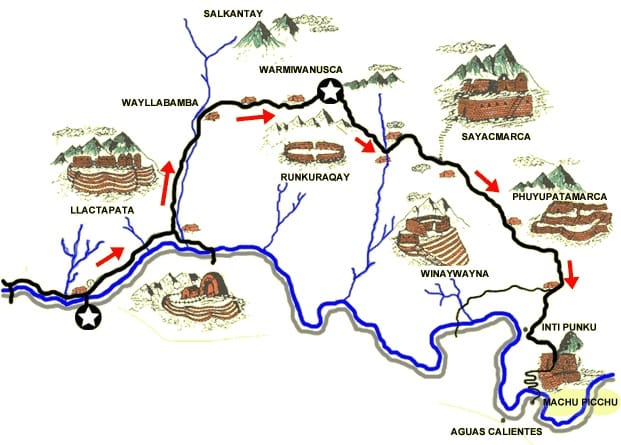
** For a detailed description of the itinerary, click here
This route was used and recognized in both Inca and colonial times.
The mountain named Salkantay is a so-called APU mountain, i.e. a sacred mountain revered by the Incas. The Salkantay road is also famous for its alternative route to the famous Inca city of Machu Picchu.
The scenery is spectacular, with the road winding between mountains and valleys and passing very close to the Salkantay glacier. It is less busy than the Inca Trail, making it a very interesting alternative.
Difficulty level: Moderate +;
4 days; 57 Km;
Total climbs of 2060 m and total descent of 3740 m.
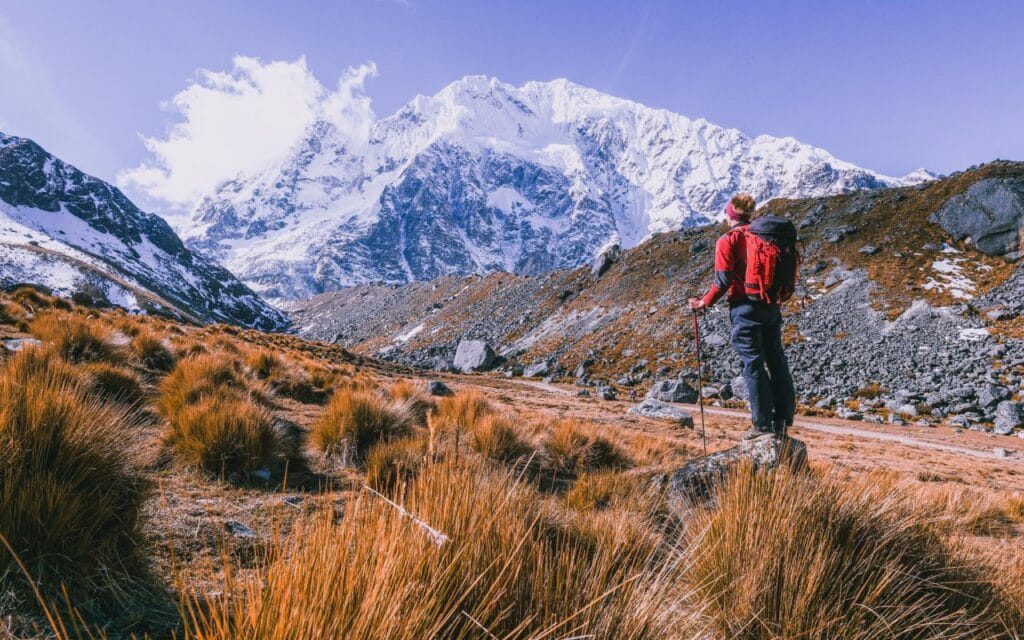 *** Please note that other circuits are also available on request.
*** Please note that other circuits are also available on request.
When you think of Peru, you think of Lake Titicaca, which holds the record as the highest navigable lake in the world. The lake has forty-one islands, some of which are inhabited.
Day 1: CUSCO – PUNO – LAKE TITICACA
Private transfer from your hotel to the Cusco bus terminal. Departure on a tourist bus (without a guide) headed to Puno and the legendary Lake Titicaca.
Along the way, you’ll stop to visit the famous chapel of Andahuaylillas, known as the Sistine Chapel of the Andes, and the archaeological site of Raqchi with its temple dedicated to the god Viracocha. You’ll cross the La Raya pass at 4,340 meters (14,240 feet) and visit the village of Pucará, known for its iconic bull statues placed on the rooftops of homes.
Arrival in Puno in the late afternoon. Private transfer from the bus station to your hotel. Overnight stay in a standard room at the hotel.
Included: departure transfer, lunch (no drinks), bus ticket, site entrance(s), English OR Spanish-speaking local guide, arrival transfer, room & breakfast.
Day 2: PUNO – UROS – TAQUILE – LUQUINA
Your guide will pick you up by car from your hotel and take you to the port of Puno.
Board a launch boat with a capacity of 30 people. A 20-minute boat ride takes you to the Uros community.
The Uros people live on unusual floating islands made of totora reeds, drifting on the emerald waters of Lake Titicaca—a tradition rooted in pre-Inca times. This very welcoming community now lives from fishing and handicrafts.
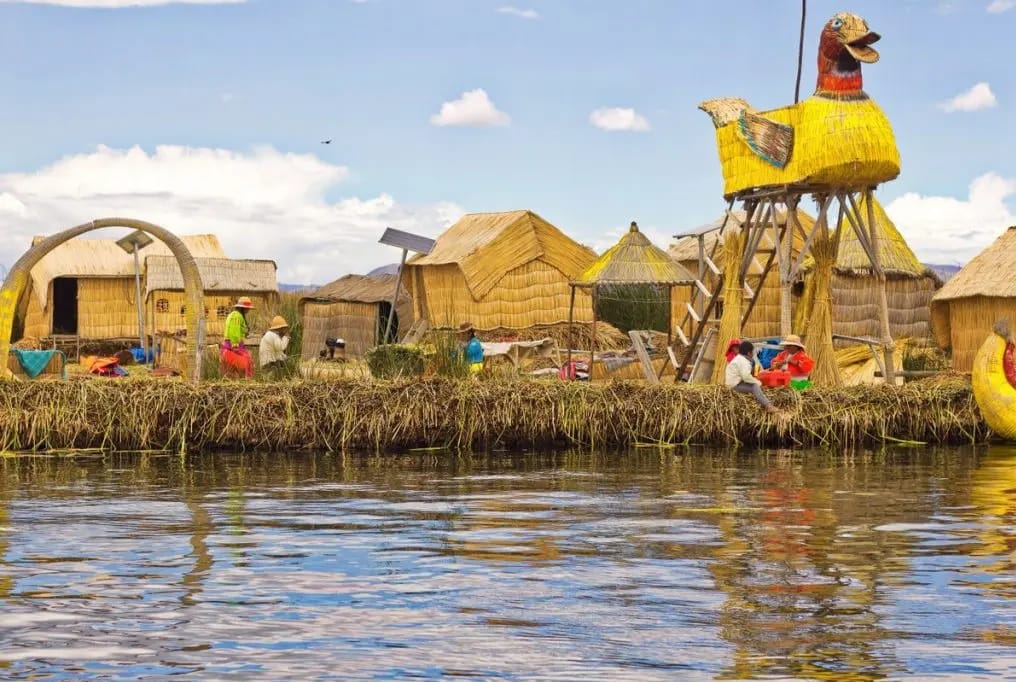
The day continues with a boat crossing of Puno Bay to Taquile Island. You’ll explore Taquile on foot and discover its people and culture. On this island, the men wear distinctive hats that they knit themselves, and the women dress in layered skirts.
Their clothing actually reflects their social status — whether they are married, have children, or are single. The island’s population speaks Quechua, unlike the nearby island of Amantani, where Aymara is spoken. Life on Taquile follows its own rhythm, and this day offers a chance to appreciate its unique cultural richness.
In the afternoon, you’ll return by boat and stop at the dock of the Luquina community. You’ll be welcomed by the locals, visit the village, and settle into your rustic cabin for an overnight stay with a host family. In the evening, enjoy a walk to the heights of the peninsula to witness one of the most beautiful sunsets in the country over the lake.
Dinner and overnight stay in the community.
Note:
– 2 to 3 hours of walking
– 1.5 to 2 hours of navigation
Private French-speaking guide included.
Included: lunch (no drinks), dinner (no drinks), site entrance(s), overnight homestay (rustic accommodation), transport, French-speaking guide.
Day 3: LUQUINA – PUNO
After a breakfast featuring local flavors, you’ll have two activity options:
Head out with your host family into the fields to experience daily life with this community of farmers, fishermen, and herders.
Set off with your French-speaking guide for a hiking exploration of the peninsula and its various villages, including a climb to the highest mountain peak on the island, offering stunning views of the lake.

Return to the village for lunch. Enjoy a peaceful break on the beach, then take a boat back to the port of Puno, followed by a transfer to your hotel.
Private French-speaking guide included.
Overnight stay at Casona Plaza Hotel in a standard room.
Included: breakfast, lunch, transport, French-speaking guide, room & breakfast.
Day 4: LUQUINA – PUNO – CUSCO / LIMA
After breakfast, transfer to the airport for your domestic flight to Cusco or Lima.
Option available for a guided tour of Lima.
Arequipa is the capital of the Peruvian region of the same name, and the country’s second-largest city in terms of population. The city lies at an altitude of over 2,335 meters (7,550 feet), at the foot of the Misti volcano in the Peruvian Andes. It is nicknamed “The White City”. The city is home to the world’s largest convent, the Santa Catalina Convent.
From Arequipa, a visit to the Colca Canyon is a must. This canyon, 3400m deep, is the 2nd deepest canyon in the world after its neighbor Cotahuasi, and is twice as deep as the Grand Canyon in the U.S. The canyon is home to a condor colony.
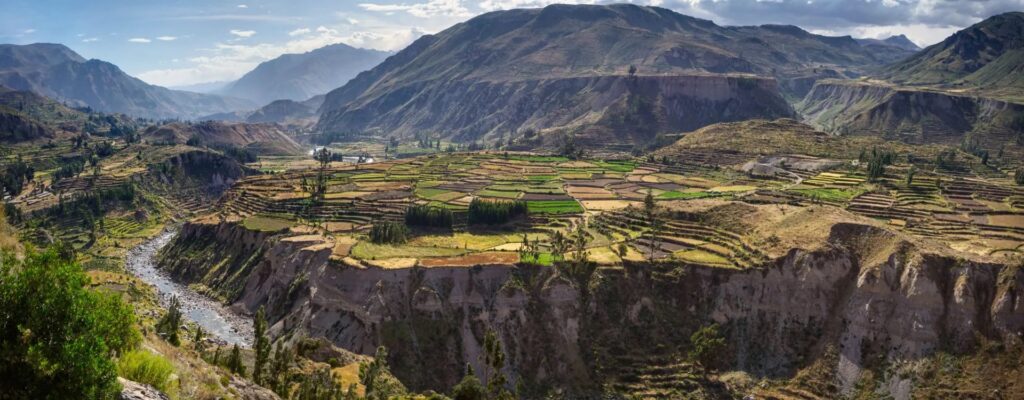
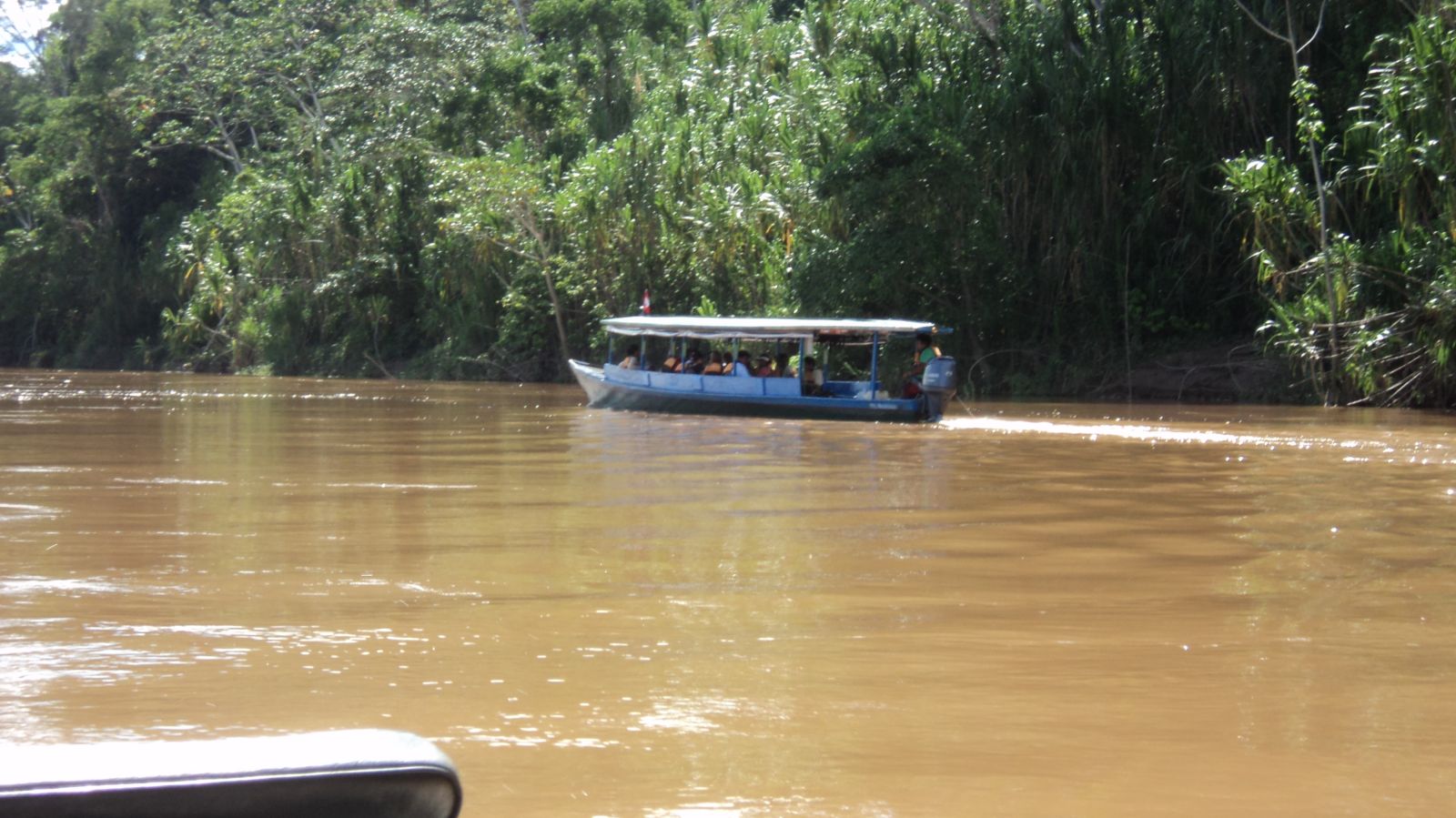 Less well known than Machu Picchu, Peru’s Amazon jungle offers a diversity of flora and fauna that you won’t find in the heights of the Andes. A short flight and a 40-minute sail on the Madre de Dios River in a typical Amazonian boat will bring you to the Corto Maltes Amazonia Lodge and your jungle stay.
Less well known than Machu Picchu, Peru’s Amazon jungle offers a diversity of flora and fauna that you won’t find in the heights of the Andes. A short flight and a 40-minute sail on the Madre de Dios River in a typical Amazonian boat will bring you to the Corto Maltes Amazonia Lodge and your jungle stay.
Enjoy an expedition to Monkey Island, home to several species of this very interesting and amusing animal, visit the Tambopata-Candamo National Reserve with a 5 km hike through the rainforest and observe the diverse flora and fauna of this national park. The visit includes the paradisiacal Sandoval Lake, home to numerous species of animal, including kingfisher birds, different species of monkeys, caimans and piranhas.
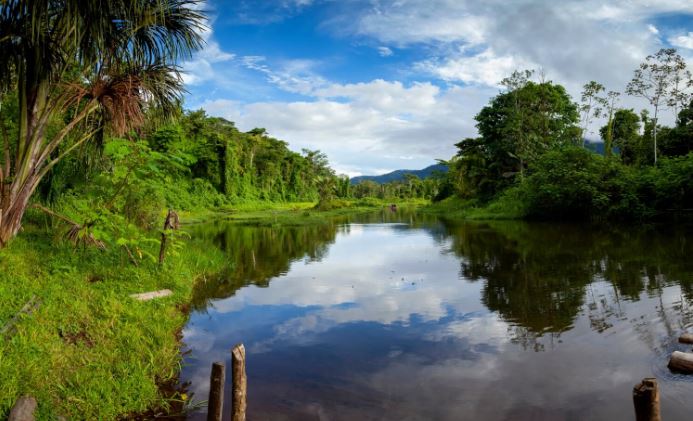
On your return, take a guided tour of Lima before catching your international flight home.
Your private English-speaking guide and vehicle will be waiting for you for a tour of the various districts of Peru’s sprawling capital, Lima. Your luggage will be dropped off at the airport storage for the day (cost in USD).
Visit the colonial center of the “City of Kings,” the Spanish colonial center, including Plaza San Martín and Plaza Mayor, where important buildings such as the Government Palace, Lima Cathedral, and the Archbishop’s Palace are located. You’ll also visit the city’s catacombs, dating back to the 17th century. This part of the tour is mostly done on foot.
Then, you’ll pass through the San Isidro district, where the country’s elite live, and the charming student neighborhood of Barranco. Enjoy a walking tour of Barranco with visits to the Ermita Church, the famous Bridge of Sighs, the “Descent of the Baths” path, and the Church of the Santísima Cruz.
The final stop is the large district of Miraflores, a city within the city and now the new center of Lima. You’ll pass by several points of interest, including the Parque del Amor, and end at the Larcomar Center, which offers several restaurants with terraces overlooking the ocean. You’ll have free time in the Miraflores district.
Your vehicle will pick you up later and take you back to Lima Airport 3 hours before your flight departure.

Group departures
English- and French-speaking departure
Inca Trail and Salkantay :
Dates for 2026: 25 April / 16 May / 6 June / 11 July / 1 August / 29 August / 12 September / 17 October / 7 November /
* Subject to availability: The Inca Trail is subject to quotas. It is therefore important to book your permit for this trek at least 6 months in advance. If no permits are available, there are other tours, such as the Salkantay, for which a permit is not required. Please contact us for more information.
PLEASE NOTE: The Peruvian government has established quotas to protect the environment and historic sites along the Inca Trail. Contact us for more information.
* Inti Raymi (Sun Festival) is celebrated every year on June 24 at the Sacsayhuamán fortress (two km from Cuzco). Inti Raymi is originally an Inca religious ceremony in honor of the winter solstice in the Andean countries of the southern hemisphere.
Prices and detailed itineraries:
Atlantis Adventures offers you several discovery tours of Peru’s wonders, as well as the possibility of “tailor-made” tours. And why not extend your stay to visit neighboring Bolivia, and discover another corner of South America? True to our slogan, Aventures Atlantis offers you trips “Tailored to your dreams”.
Inclusions
- Land, rail and sea transport
- Standard accommodation (double occ.)
- Entrance to all sites mentioned in the program
- All you need for the Inca Trail and Salkantay (private transfer; local English-speaking guide; cook; porters; meals; tents; inflatable mattresses; oxygen)
- All breakfasts and meals mentioned in the program
- Planning and logistics
- Taxes
***PLEASE NOTE: Your sleeping bag and personal belongings are not carried by the porters; you must carry them or hire a private porter. A private porter can carry up to 15 kilos of extra equipment; it is possible to share a porter for two people.
Not included :
- Personal equipment (sleeping bag, walking sticks, etc.)
- Meals not mentioned in the program, snacks and beverages
- Insurance
- Personal expenses
- Tips
- Airport taxes in Peru (if applicable)
- All international and domestic flights

The Inca Trail and the Salkantay trek lead to Machu Picchu through Inca ruins, majestic mountains and lush forests. One…
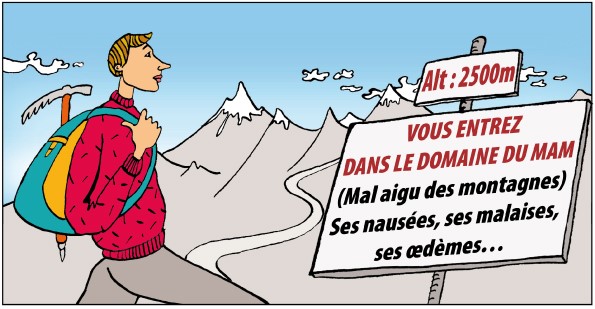
There are many sources of information on acute mountain sickness (AMS). We have compiled some of this information for you…

Peru, the world’s best cultural destination, is a treasure trove for lovers of history and tradition. The country is marked…
Peru – Machu Picchu and more
Are you interested in this destination or would you like more information? Don't hesitate to contact us!
Stay informed about our upcoming adventures
Subscribe to our newsletter to receive information on our adventure trips and activities, as well as tips on how to make the best travel choices.

